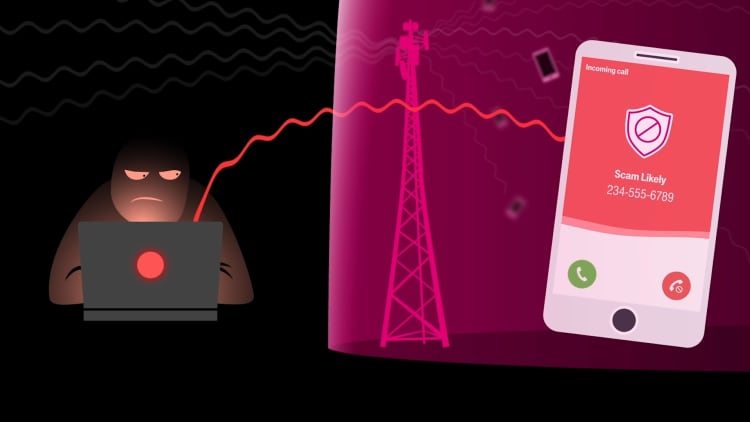Nearly 1 in 3 Americans say they've fallen victim to a phone scam in the past year, like the ones where someone calls pretending to be from the IRS or from a company inquiring about an expiring warranty on your vehicle.
That's according to a new report from Truecaller that finds roughly 59.4 million Americans have lost money to phone scams over the past year. About 19% fell victim more than once, according to the report, which was undertaken in partnership with The Harris Poll in March 2021.
Not only is the number of victims on the rise, the expense of these scams is also up. The average reported loss was about $502 per person, the highest amount on record since Truecaller began tracking this data in 2014 and up significantly from the average loss of $351 reported in 2020.
"It's very disappointing to me, and alarming that people are getting convinced to send criminals money," says Clayton LiaBraaten, senior advisory board member at Truecaller. Yet it's not surprising, he adds, considering how convincing scammers can be. "These criminals are incredibly clever in the way that they manipulate people."
Fraudsters are very good at what they do; they understand all of the technology, all of the loopholes and all of the gaps to get into the networks, as well as the psychosocial approach to intimidating people and getting them to pay, LiaBratten says.
Truecaller found that younger Americans are more susceptible to phone scams. And across generations, about 59.4% of men reported being scammed, compared to just 38.3% of women.
Americans will likely see a short-term dip in scam calls over the summer, in part because the Federal Communications Commission is requiring providers to implement caller ID authentication technology by June 30, 2021. LiaBraaten says this will help mitigate spoofing, but it's not a silver bullet.
Every time regulators or businesses find a new anti-fraud solution, put in a firewall or develop some sort of new anti-malware software, the criminals find a way to get around it. "They're not going to give up," LiaBraaten says.
Yet there are ways that consumers can make it more difficult for scammers to successfully scam money from them.
Let unknown calls go to voicemail
Most experts recommend that consumers avoid picking up any calls from unfamiliar phone numbers. Instead, let them roll into voicemail for further scrutiny. "If somebody doesn't leave a voicemail, then it obviously wasn't that important," LiaBraaten says.
Although the FCC's new requirement will make it more difficult for scammers to use spoofing technology to impersonate government agencies and legitimate businesses, consumers should still be on guard.
Additionally, LiaBraaten says Americans should be leery about picking up the phone for out-of-area calls. If someone is calling you from Lexington, Kentucky, or Boise, Idaho, and you have no relationships to people or businesses there, the simplest solution is to let the call go to voicemail.
Block and report spam calls
If you do suspect a call is spam, block it, LiaBraaten says. You can manually block a call on your phone or download a robocall-blocking app.
Most mobile service providers have free software or apps that allow you to screen or block automated calls. Some, like Verizon, have software that automatically blocks some of the worst robocalls throughout their network, while others have separate options that consumers can install.
If a caller didn't leave a voicemail and you have no idea who it was, you can use a number lookup to see if it's attributed to any business that you might be affiliated with. If not, block it. Some apps allow you to also report the number so that they can warn other users. Additionally, you can report unwanted calls through the national Do Not Call Registry.
Limit how you give your number out
Be careful where and how you give out your number. There are a lot of ways scammers can get their hands on your phone number, but you don't want to make it any easier for them, LiaBraaten says.
Do you really need to include it on websites or social media accounts? Do you need to give it out to retailers when they ask at checkout?
"This is high enough at $500 a pop that people should be treating their phone numbers like they treat their bank account numbers," LiaBraaten says.
Sign up now: Get smarter about your money and career with our weekly newsletter
Don't miss: Online fraud attempts are up 25% in the US—here's why



